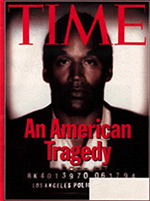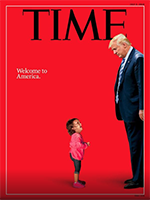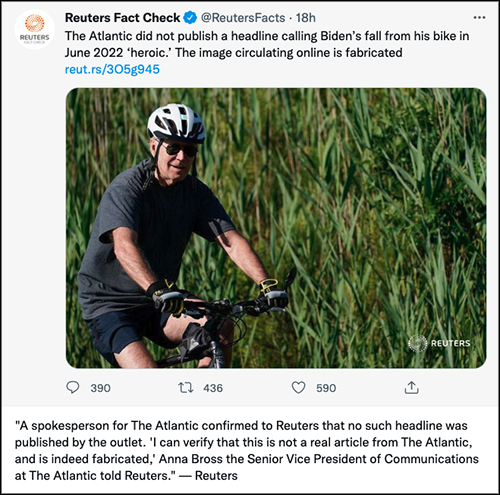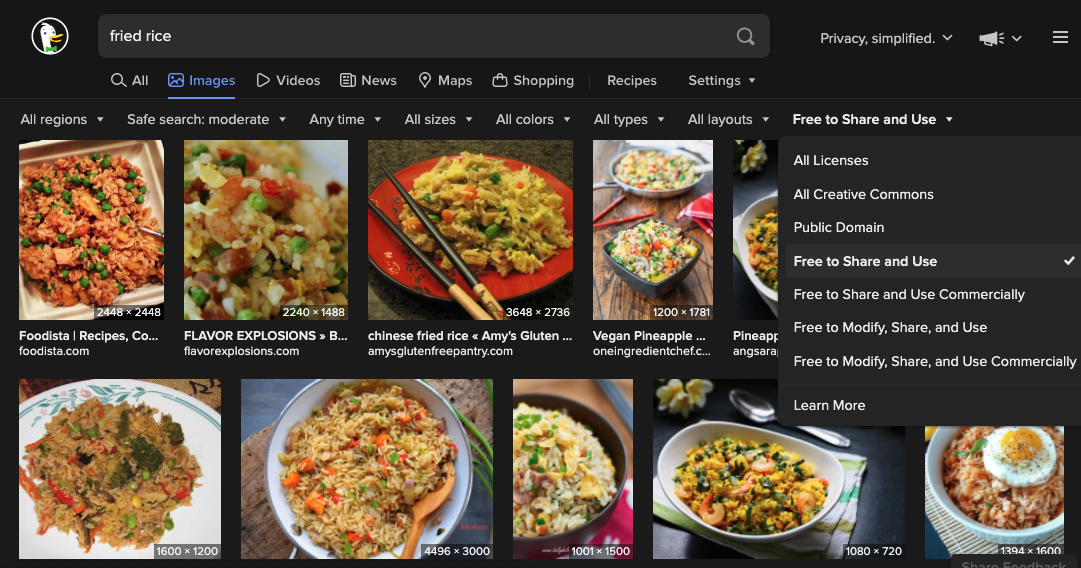11 Visual Concerns
We’ll open this wide-ranging lesson on visual concerns with a hypothetical scenario.
Study the following presentation slides by using the forward button or clicking on sections of the control bar.
This chapter focuses on ethical use of images and improper photo manipulation. That’s a lot to cover, so the chapter is slightly longer than most others in this guidebook.
Although many of the examples involve still photography, the same principles can apply to video. If what is depicted in a photo or video is not true to life or didn’t actually happen, then image manipulation can become visual fabrication.
BEYOND GOOD INTENTIONS
Media professionals sometimes have good intentions when they manipulate photographs beyond subtle adjustments to brightness, contrast or color tones for visual clarity and accuracy. But that doesn’t make the manipulation ethically acceptable.
For example, in 2013 the New York Daily News altered a photo of a particularly graphic scene from the bombing at the Boston Marathon. Here is a link to comparison photos and a brief summary:
• ‘Daily News’ doctored front-page photo from Boston bombing – Politico
A spokesman for the newspaper said, “I think the rest of the media should have been as sensitive as the Daily News.”
However, many photo editors criticized the decision. The National Press Photographers Association’s Code of Ethics includes this standard:
Editing should maintain the integrity of the photographic images’ content and context. Do not manipulate images or add or alter sound in any way that can mislead viewers or misrepresent subjects.
• National Press Photographers Association Code of Ethics
In this case, even blurring can be considered a form of image manipulation. Some photo editors would provide this advice: “If the photo is too graphic, pick a different photo.”
More recently, with so many consumers hearing the term “fake news,” it’s hard to justify any digital manipulation that makes a photo less truthful.
FOUR EXAMPLES
The following four presentations slides include examples that will be used in the remainder of the chapter.
View the presentation slides by using the forward button or clicking on sections of the control bar. For this presentation, you may want to click on the lower-right full-screen option (arrows) to see enlarged views of the images being discussed.
As the first example with Abraham Lincoln shows, image manipulation did not begin with Photoshop or the Loch Ness monster.
COLLEGE MARKETING
 Some media professionals working for colleges may have good intentions to promote diversity at their institutions. They want to appeal to a diverse range of potential students. But what if the images they use to promote diversity have been manipulated?
Some media professionals working for colleges may have good intentions to promote diversity at their institutions. They want to appeal to a diverse range of potential students. But what if the images they use to promote diversity have been manipulated?
In the University of Wisconsin example from the slide presentation above, you see how a Black student was added to the original photo of students at a football game. National Public Radio covered this story in 2013, as you can hear in this audio:
• A campus more colorful than reality: Beware that college brochure – NPR
For more cautionary stories about colleges that tried to manipulate their way to a more diverse campus, you can read the following two articles from Inside Higher Ed:
• When colleges seek diversity through Photoshop – Inside Higher Ed
• Marketing authenticity in higher education – Inside Higher Ed
MAGAZINE COVERS
 Magazine covers have been particularly susceptible to image manipulation. You saw two noteworthy magazine covers in the example slides.
Magazine covers have been particularly susceptible to image manipulation. You saw two noteworthy magazine covers in the example slides.
Perhaps the most famous U.S. case study involved O.J. Simpson. In 1994, less than five years after the launch of Photoshop, Time magazine published a cover photo of Simpson that made his skin tones much darker than the original photo. The cover designer, Matt Mahurin, said the cover was supposed to show a dramatic use of light, much like a key moment in a theater play, but many people viewed it as a racist form of image manipulation.
Writing for the Society of Professional Journalists, Mahurin said that he was unaware that his dramatic cover idea might be perceived as racist by others.
“My inability to head off this controversy resulted from the combination of never having to endure racism personally, as well as being raised in a non-racist home,” Mahurin wrote.
Fast forward through 24 years worth of software updates, and Time magazine was at the center of another cover controversy. While reporting on U.S. border policy, John Moore captured a powerful photo of a 2-year-old girl from Honduras. But Time magazine editors cut out the photo’s other elements to isolate the girl, and then they paired the girl with President Donald Trump for the controversial cover.
 You can read more about the case example here:
You can read more about the case example here:
• Father says little Honduran girl on Time cover was not taken from mother – Reuters
And if you are interested in a deeper dive, you can read this stinging criticism of Time’s cover and view Moore’s original photo:
• Time magazine’s cover isn’t bold or brave. It’s exploitative. – Vox
In this case, the cover illustration joins more than one image. Do all viewers understand that? Your response to the question probably depends on how much credit you give to an audience’s critical thinking skills and ability to recognize that this was merely a symbolic illustration.
Another ethical question: Was it fair for editors to mislead some viewers into believing Trump’s border policies caused this girl to be alone and crying when, in fact, that was not the full story?
LOTS OF APOLOGIES
Beyond the border-policy example above, Time magazine certainly isn’t the only publication to be criticized for misleading images related to political agenda. Here are three examples that led to apologies from Fox News.
In the first instance, scenes from earlier protests in Minneapolis were used to falsely represent a Black Lives Matter protest in Seattle.
• Fox News removes altered images from Seattle protest – Axios
In the second instance, a Fox News graphic made a bizarre connection between stock market increases and notable killings of Black men in the United States.
• Fox News apologizes for on-air graphic showing market reaction to violence against Black men – USA Today
Finally, Fox News cropped Donald Trump out of an old photo that included convicted sex offender Jeffrey Epstein and his assistant Ghislaine Maxwell.
• Fox News apologizes for cropping Trump out of Epstein and Maxwell photo – The Guardian
Even governmental agencies are not immune to the temptation to manipulate images for political purposes (or in this case, to avoid political controversy). The National Archives apologized for blurring the text of anti-Trump signs included in an exhibit about women’s suffrage. Read the following article and consider the long-term consequences when historic photos are altered.
• National Archives says `wrong’ to blur anti-Trump signs – Associated Press
PICKING THE RIGHT IMAGE
Beyond manipulation, ethical journalists should be sure that the images they select to accompany text stories do not mislead audiences, even when the photos themselves have not been altered. For example, a 2020 NPR article about protests in Louisville had this headline:
Vehicle Attacks Rise as Extremists Target Protesters
To casual readers, the photo that accompanied this story showed what appeared to be a vehicle attack. However, that was not the case, as NPR Public Editor Kelly McBride explained:
Rather than show a car purposely ramming protesters, the photo (a still frame from a video released by the Louisville Metro Police Department) was of a case where protesters had been charged by police with first-degree rioting and obstructing a roadway, initiating a confrontation with the driver of the car. The police said the driver will not face charges.
In short, the photo did not depict a vehicle attack and thus misled readers. Here’s a link to McBride’s full critique:
• In choosing the wrong photo, NPR editors paved the way for partisan attack – NPR Public Editor
And for any news story that relies heavily on text and statistics, an editor should be sure that accompanying images align with the story’s tone and content. For example, a 2022 research study suggested that journalists should not illustrate stories about lethally hot weather with fun beach photos.
POWERFUL IMAGES
Authentic, powerful images can be disturbing, but they can also educate viewers and lead to improvements in society, politics and culture. The following linked NBCU Academy video discusses a journalist’s responsibility in making decisions about controversial images. This video is not embedded within the chapter because it includes graphic imagery that may disturb some viewers.
• Power of the Image – Behind the Story – NBCU Academy
Similarly, in a 2022 New York Times essay about the war in Ukraine, David Hume Kennerly argued that “evocative images can affect policy, spur action, and every now and then alter the course of history.” If you choose to read the article, be prepared to view several graphic photos, although Kennerly wrote in his conclusion, “I’m getting tired of those endless disclaimers — like the one at the top of this essay — that say, ‘Warning: Graphic Material.’ The best photographs of war might make us want to look away. It’s imperative that we do not.”
• Photographing Hell – The New York Times
(University of Arkansas students have free access to the NY Times by signing up via campus email credentials)
Similarly, following the school shooting in Uvalde, Texas, in May 2022, David Boardman, the former executive editor of the Seattle Times, tweeted this:
Finally, if you are interested in an optional deep dive into the decision-making process of one editor following the July 4, 2022, parade shooting near Chicago, you can read the following:
• How the editor of the Chicago Sun-Times decided to publish a photo of victims of the Highland Park shooting – Poynter
FABRICATED SCREENSHOTS
One visual phenomenon on social media involves fabricated screenshots that purport to show published content from news outlets. The actual articles, however, do not exist.
The screenshot below shows a fabricated headline design that appeared to promote an opinion piece in the Guardian. However, a Reuters Fact Check article noted that “there is no evidence that this headline was ever published by the Guardian, and the author of the piece said that images showing such a headline were fake.”

Similarly, when President Joe Biden fell while riding his bicycle, a fabricated screenshot on social media suggested that the Atlantic had published a headline labeling the fall as “heroic.” No such headline had been published by the Atlantic.

For details on these two examples of fabricated screenshots, you can read explanations from Reuters Fact Check:
• Fact Check – The Atlantic did not publish headline calling President Biden’s bike fall ‘heroic’ – Reuters Fact Check
• Fact Check – Screenshot of headline saying Depp/Heard trial was ‘the female Holocaust’ is fake – Reuters Fact Check
IMAGE PLAGIARISM
Yes, images can be plagiarized. That’s a better topic for a course about media law, web publishing or graphic design, but it deserves a mention here.
If you use an image without permission from the copyright holder, that’s essentially plagiarism, which is unethical. The solution: Only use photos and video if you have express permission from the copyright holder or you carefully follow applicable license requirements. Whenever possible, give credit to the copyright holder.
For still images, Google and DuckDuckGo browsers include tools for restricting an image search to Creative Commons licenses and locating information for proper attribution. This can be a journalist’s go-to strategy for finding publicly available images.
Below is a screenshot example of imaging licensing options from DuckDuckGo. If a user selects the licensing for “Free to Share and Use Commercially,” for example, any of the displayed images could be published in a feature story about fried rice as long as an image credit properly acknowledges the copyright holder. The least cumbersome option is to select “Public Domain,” which means that, legally speaking, you don’t even have to acknowledge the source, although it’s still an ethical courtesy to do so.

And here’s a copyright (kinda) joke as a reminder that you should not cite Google as a copyright source.
Using “Photo courtesy of Google” as a photo credit is much like saying “Milk courtesy of the refrigerator.” In the real world, there was a cow involved, and she should receive credit for that milk.
Please don’t use “photo courtesy of Google” or “photo courtesy of DuckDuckGo” for your photo credits. Google and DuckDuckGo are just search tools to help you locate available images. You need to give credit to the original source of the image.
JUST SAY NO
An old saying in journalism goes something like this: “Once a plagiarist, always a plagiarist.” The same may hold true for image manipulation in news photos. If you’ve altered the content of one photo, you may not be able to avoid the temptation to do it again.
That’s why zero-tolerance policies for image manipulation and image plagiarism are the ethically safest strategies for media professionals.
CLOSING REVIEW
WRITE ABOUT IT
Answer each of the following numbered items in approximately four or five sentences each. When possible, strengthen your responses with brief supporting content from this chapter.
1. Return to the opening hypothetical about deleting power lines and electric-meter boxes from a photo of prominent university donors. If you were the graphic designer and photo editor in the hypothetical, how would you handle the situation? What would you say to your supervisor? Explain your reasoning.
2. If you were a public relations executive, what long-term policies and practices could you implement to ensure that your employees, many of whom may have good intentions and strong technical skills but no ethics training, understand that image manipulation is not an acceptable practice for your business or organization? Which components of this chapter seem most important to emphasize to these employees?
3. Based on examples used in this chapter, how would you describe the most common motives and rationalizations for image manipulation? Why is it a persistent problem in news and public relations?
4. What are the most compelling reasons and situations for publishing photos or broadcasting videos that contain graphic visual content? Based on content and related links in this chapter, cite some of the factors in the decision-making process.


